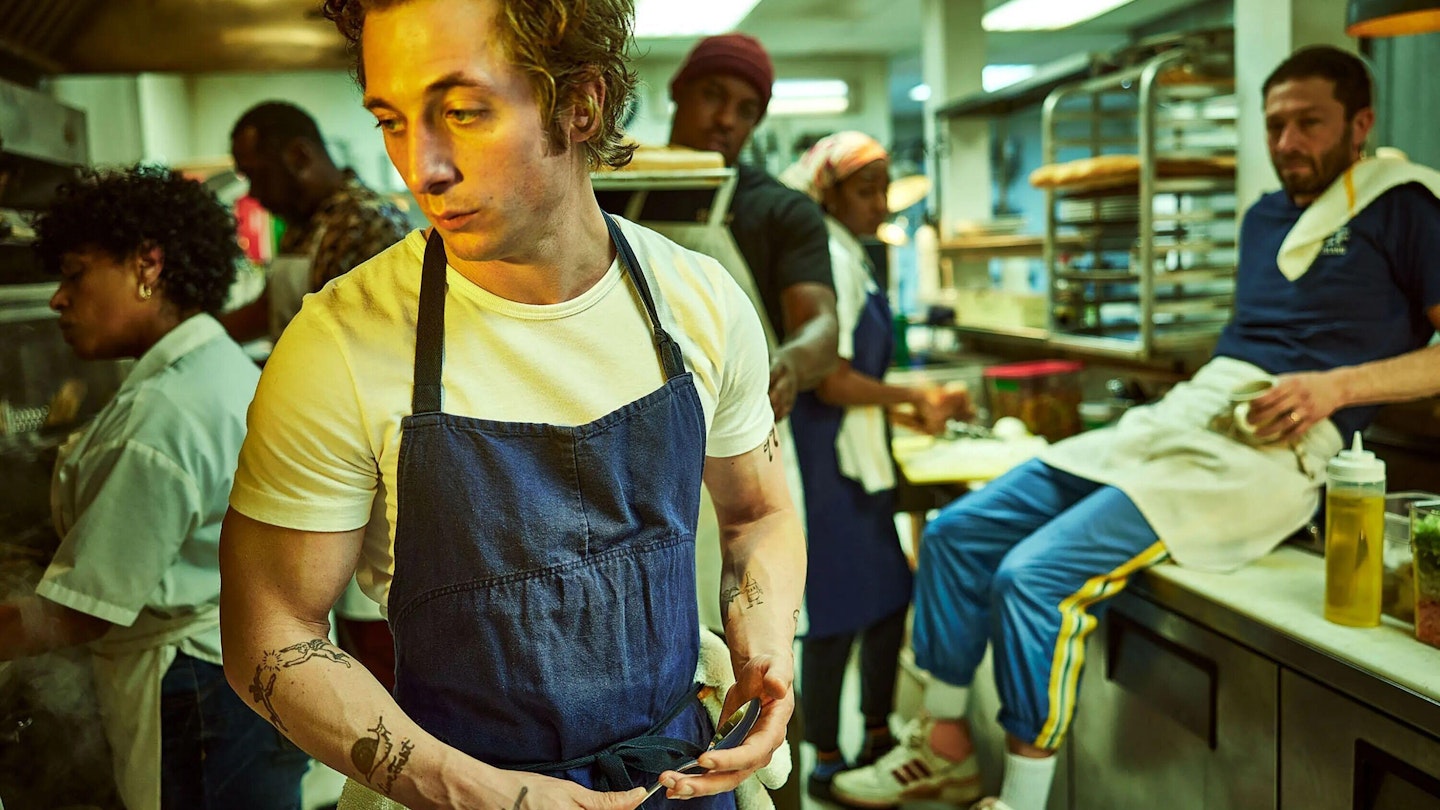The Culinary Journey of ‘The Bear’ Season 2
Welcome back to “The Bear,” FX’s most-watched half-hour series, featuring the charismatic Jeremy Allen White as the burned-out chef Carmy Berzatto. In Season 2, we return to the nostalgic setting of an old-school Italian beef spot.
This season, The Original Beef of Chicagoland undergoes transformation into a fine-dining venue called The Bear. The show delves deeper into the lives of its compelling characters, including the talented chef Sydney Adamu (Ayo Edebiri), who takes center stage in her own episode. Additionally, fan favorite Marcus (Lionel Boyce) embarks on an adventure to Copenhagen, where he stages alongside an elite pastry chef, portrayed by the lovable Will Poulter.

If the first season provided an unflinching perspective on the dysfunctional machinery of a small family restaurant, this season escalates the intensity, skillfully blending high-octane personal and family drama with the complexities involved in transitioning from beef to boeuf.
Chicago, serving as the show’s mise en place, emerges as a vital character in its own right. Following the phenomenal success of the first season, fans have flocked to locations like Mr. Beef on Orleans, the real-life inspiration for The Original Beef of Chicagoland, further solidifying the city’s deeply rooted culinary legacy. Amid ongoing debates about how accurately the show represents the Chicago restaurant scene, the authentic culinary history of its neighborhoods remains unequivocally acknowledged.
Where’s the beef?
The actual Mr. Beef and its fictional counterpart reside in the River North neighborhood. Moreover, although the series accurately captures various elements of Chicago culture, such as local restaurant critic Steve Dolensky’s photo and the omnipresent references to the Bears and White Sox, its portrayal of the River North neighborhood is slightly misleading.
“The Bear” frequently emphasizes neighborhood gentrification and the potential customer backlash against upscale menu changes. However, it’s essential to note that River North has embraced gentrified food concepts and upscale dining for over 40 years, acting as a hub for legendary Chicago establishments that define the city’s culinary landscape.

Truth is Better Than Fiction
Situated between the main and north branches of the Chicago River, River North is renowned for art galleries, architectural marvels, and a plethora of iconic Chicago eateries. The neighborhood, reconstructed post-Great Chicago Fire in 1871, emerged as an industrial epicenter. Today, former factories and warehouses house vibrant nightclubs, galleries, and design firms, whereas restaurants fill the bustling streets. Notably, the Windy City is famous for its deep-dish pizza, Italian beef, hot dogs, and steakhouses, all of which boast a rich history in River North.
Mr. Beef stands as a landmark for Chicago Italian beef sandwiches, having first opened in 1963. It was the city’s inaugural Italian Beef stand, known for its meticulous preparation – requiring 3-4 days of marinating, cooking, freezing, and slicing. The iconic sandwich traces its origins to the Little Italy neighborhood near the end of WWI, with Mr. Beef elevating its profile across diverse US culinary landscapes.

Deep-Dish Dishing
Chicago deep-dish pizza has become a cultural icon, with Pizzeria Uno often credited as the original establishment, dating back to 1943. Upon entering a charming Victorian mansion, diners can relish a unique recipe characterized by high edges reminiscent of an apple pie crust, layered generously with cheese and toppings.
Steakhouses represent another cornerstone of Chicago’s culinary identity, with Gene & Georgetti emerging as the oldest, serving perfectly cooked steaks and chops since 1941. Guests can indulge in classic dishes like a thick bone-in ribeye or a broiled veal chop, paired with Vesuvio potatoes, another quintessential dish from the city.

Top Dogs
A Chicago-style hot dog is truly a hand-held feast – an all-beef sausage topped with mustard, relish, onions, sport peppers, tomatoes, a pickle spear, and a hint of celery salt served in a steamed poppy seed bun. River North’s go-to spot for this delectable treat is Portillo’s, a cherished institution since 1963 that also serves Italian beef sandwiches, allowing food enthusiasts to indulge in two Chicago legends at once.
River North’s New Crop
While hardly new, Rick Bayless’s Frontera Grill has served as a pioneer of upscale Mexican cuisine since 1987. Recently, Bar Goa—an Indian bar and gastropub by chef Sahil Sethi—has quickly gained popularity since its 2021 debut, offering dishes influenced by Portuguese cuisine alongside flavors from India’s southern regions.
In Season 2 of “The Bear,” several contemporary Chicago restaurants and notable chefs appear, enriching the narrative with a layer of authenticity. In episode 3, chef Sydney embarks on a gastronomic adventure reminiscent of Ferris Bueller’s day off, exploring dishes from various restaurants, including Kasama, a Michelin-starred Filipino restaurant, and Publican Quality Meats, engaging in insightful discussions with real-life head butcher Rob Leavitt.
Therefore, the next time you find yourself in the Windy City, take the opportunity to experience these phenomenal restaurants, both new and established. While “The Bear” offers a captivating culinary binge, Chicago’s diverse restaurant scene deserves to be savored and celebrated.





